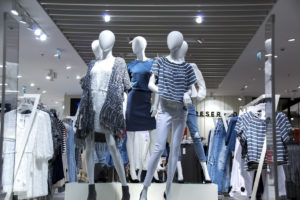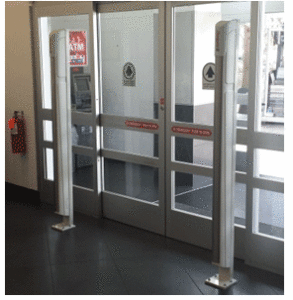 Many small and big chain businesses across the country are fed up with the amount they lose due to shoplifting and employee theft. The solutions are seemingly unavailable for these businesses and they are teaming up with local police departments to address this issue.
Many small and big chain businesses across the country are fed up with the amount they lose due to shoplifting and employee theft. The solutions are seemingly unavailable for these businesses and they are teaming up with local police departments to address this issue.
The Chico Police Department, The Chico Chamber of commerce and the Chico Business Association are teaming up in an effort to prevent shoplifting in their community. This is not the only joint effort, many other states’ police departments and communities are getting together to form a coalition to find a solution to shoplifting.
Shoplifting puts an additional strain on these businesses that in some cases are already having difficulty staying afloat and the losses incurred due to this crime make it an impossible business to sustain.
One the many ways they lose to shoplifting is to organized retail theft that involves many individuals and can cost a store thousands of dollars in a single day. Home Improvements stores targeted by individuals can damage the bottom line of these stores even though they are big retail chains that can offset the cost due to shoplifting better than the small business owner.
In some states, theft legislation has put many business owners scratching their heads. The losses they incurred due to shoplifting, they see as a direct consequence to the legislation government officials passed in their states. Preventive measures are not enough, youth programs to prevent shoplifting and violent crimes are not enough for these businesses because they do not see it happening soon enough for the well being of their stores.
What are some other alternatives to prevent shoplifting?
- Training – Trained personnel can make a big difference in your store. Recent reports in the UK have shown a dramatic increase in violent incidents from the previous year due to shoplifting. The difference between a trained employee and one that is not can be the difference between life and death
- Shoplifting prevention systems – If you do not have one and rely solely on your employees, the losses your store is suffering may be staggering. A shoplifting prevention system is a necessity for a retail business, and the amount invested in such system may be the best investment you can make for the success of your store.
- Software that works together with the loss prevention system and the trained personnel in your store are pivotal to the success of your retail business. It is a process that needs all the parts to work together to be successful and to achieve its purpose.
Shoplifting is a crime that affects society in general, and the prevention of such crime seems to be the only alternative retail businesses have. Prevention includes training your personnel, investing in a loss prevention system and software that can help you mitigate the losses due to this crime. Those three preventive measures cannot work if your employees are not engaged and are not willing to work with you in the prevention of this crime. Happiness in the workplace is important but if you are dealing with disgruntled employees, preventing shoplifting may be very hard to achieve. Talk to your employees and find out if you need to address that issue first and foremost.
 Because like alcohol abuse, both legal and illegal drug use, affects your bottom line. This issue
Because like alcohol abuse, both legal and illegal drug use, affects your bottom line. This issue 
 As managers and supervisors, we are all guilty at some point of assuming our employees will know what we are wanting from them when we make a request or assign a project. It may be something as simple as asking someone to empty a trash canister or as complicated as resetting a plan-o-gram. In our minds, the requested task may only require common sense but to the employee, it may be something totally different. Take the trash can example, you may ask an employee to empty it and assumed they would empty it into a compactor and place a new trash can liner inside. The employee may only hear that you want them to take the bag out and place the trash beside the compactor. They don’t hear you tell them to put a new liner inside the canister when they are done because you never said it. It seems like it should only be common sense but it isn’t necessarily the case. The same problem exists for every aspect of a job. Sometimes those of us in management positions make unfair assumptions and then get angry when our team members don’t do what we expected them to do.
As managers and supervisors, we are all guilty at some point of assuming our employees will know what we are wanting from them when we make a request or assign a project. It may be something as simple as asking someone to empty a trash canister or as complicated as resetting a plan-o-gram. In our minds, the requested task may only require common sense but to the employee, it may be something totally different. Take the trash can example, you may ask an employee to empty it and assumed they would empty it into a compactor and place a new trash can liner inside. The employee may only hear that you want them to take the bag out and place the trash beside the compactor. They don’t hear you tell them to put a new liner inside the canister when they are done because you never said it. It seems like it should only be common sense but it isn’t necessarily the case. The same problem exists for every aspect of a job. Sometimes those of us in management positions make unfair assumptions and then get angry when our team members don’t do what we expected them to do. Some of the most stolen items in stores in the United States are not surprising. From Infant formula to razors, people are stealing these items to sell them for quick cash or because they are shoplifters that are dedicated to doing this crime. Valentine’s Day is approaching, and some of the items that seem to be gifted during this day are among the most commonly stolen items in the United States. A shoplifter will steal any time of the year, whether the opportunity presents itself or not, or whether it’s a holiday or a weekday. As a store manager or employee of a store, greeting and treating a customer politely can gain you a customer, and deter a shoplifter from stealing from your store. Customer service has been proven time and again to be a great deterrent to shoplifters, and cannot hurt to be polite and competent with your regular customers.
Some of the most stolen items in stores in the United States are not surprising. From Infant formula to razors, people are stealing these items to sell them for quick cash or because they are shoplifters that are dedicated to doing this crime. Valentine’s Day is approaching, and some of the items that seem to be gifted during this day are among the most commonly stolen items in the United States. A shoplifter will steal any time of the year, whether the opportunity presents itself or not, or whether it’s a holiday or a weekday. As a store manager or employee of a store, greeting and treating a customer politely can gain you a customer, and deter a shoplifter from stealing from your store. Customer service has been proven time and again to be a great deterrent to shoplifters, and cannot hurt to be polite and competent with your regular customers. Hopefully, your store is one of those places where employees look forward to coming to work. You know what I’m talking about it’s that environment where everyone is happy to be there. Employees know they are there to get a job done and take pride in the service they offer to the customers. It’s the type of job where people may have an off day but their co-workers are supportive and help pick them up. It happens to all of us. These jobs have a manager who interacts with the employees and takes a real interest in each of them. The boss may take time to say hello and greet everyone. They know their employees by name and may even know their families. Unfortunately, not every workplace has such a camaraderie amongst the team members. There is any number of reasons this can happen but a major contributor to an unhappy workplace can be the hiring of an employee with a poor attitude.
Hopefully, your store is one of those places where employees look forward to coming to work. You know what I’m talking about it’s that environment where everyone is happy to be there. Employees know they are there to get a job done and take pride in the service they offer to the customers. It’s the type of job where people may have an off day but their co-workers are supportive and help pick them up. It happens to all of us. These jobs have a manager who interacts with the employees and takes a real interest in each of them. The boss may take time to say hello and greet everyone. They know their employees by name and may even know their families. Unfortunately, not every workplace has such a camaraderie amongst the team members. There is any number of reasons this can happen but a major contributor to an unhappy workplace can be the hiring of an employee with a poor attitude. C
C

 With darker daylight hours comes the need for more coffee, the use of lights earlier and a plan to keep crime away from your store or business. Have you considered that one of the following types of crime could affect you?
With darker daylight hours comes the need for more coffee, the use of lights earlier and a plan to keep crime away from your store or business. Have you considered that one of the following types of crime could affect you?
 Accidents can be costly to businesses. In fact, according to the
Accidents can be costly to businesses. In fact, according to the